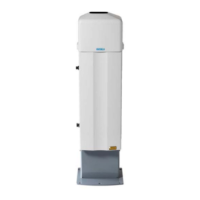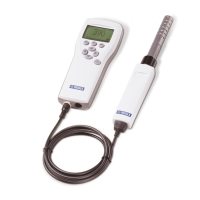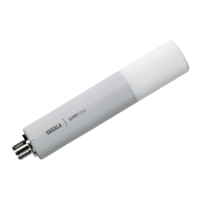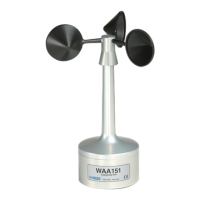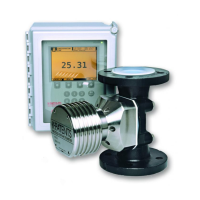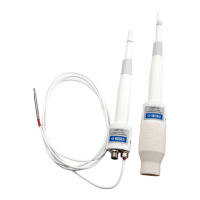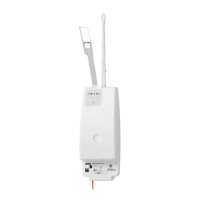Ceilometer CT25K
User’s Guide CT25K-U059en-2.1
52
Extinction Normalization and Vertical Visibility
Any fog, precipitation, or similar obstruction to vision between ground and
cloud base may attenuate the cloud base signal and produce backscatter peaks
that far exceed that from the cloud. Virtually any backscatter height profile is
possible, up to some physical limits. To distinguish a significant cloud return
signal, the attenuation of fog, precipitation, etc., has to be taken into account
by normalizing with regard to extinction. The profile thus obtained is
proportional to the extinction coefficient at various heights, and enables the
use of fairly straightforward threshold criteria to determine what is cloud and
what is not.
By assuming a linear relationship between backscatter and extinction
coefficient according to the previous formula and that the ratio, k, is constant
over the range observed, it is possible to obtain an extinction coefficient
profile through a mathematical computation. This is also called inverting the
backscatter profile to obtain the extinction coefficient profile, and answers the
question, "What kind of extinction coefficient profile would produce the
backscatter profile measured?".
No assumption as to the absolute value of the ratio, k, needs to be made if k is
constant with height. The assumptions that have to be made are fairly truthful,
and in any case accurate enough for the purpose of cloud detection.
Likewise, the inversion is also independent of several instrumental
uncertainties including transmitted power and receiver sensitivity.
An estimate of Vertical Visibility can easily be calculated from the extinction
coefficient profile because of the straightforward extinction
coefficient-to-visibility relationship, provided that a constant contrast
threshold is assumed. Visibility will simply be that height where the integral
of the extinction coefficient profile, starting from ground, equals the natural
logarithm of the contrast threshold, sign disregarded.
Tests and research have, however, shown that the 5 % contrast threshold
widely used for horizontal measurement is unsuitable for vertical
measurement if values close to those estimated by a ground-based observer
are to be obtained.
The CT25K uses a contrast threshold value which, through many tests, has
been found to give Vertical Visibility values closest to those reported by
ground-based human observers. A wide safety margin is obtained with regard
to pilots looking down in the same conditions since the contrast objects,
especially runway lights, are much more distinct on the ground.
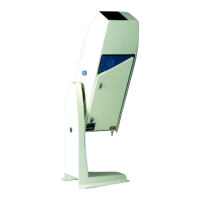
